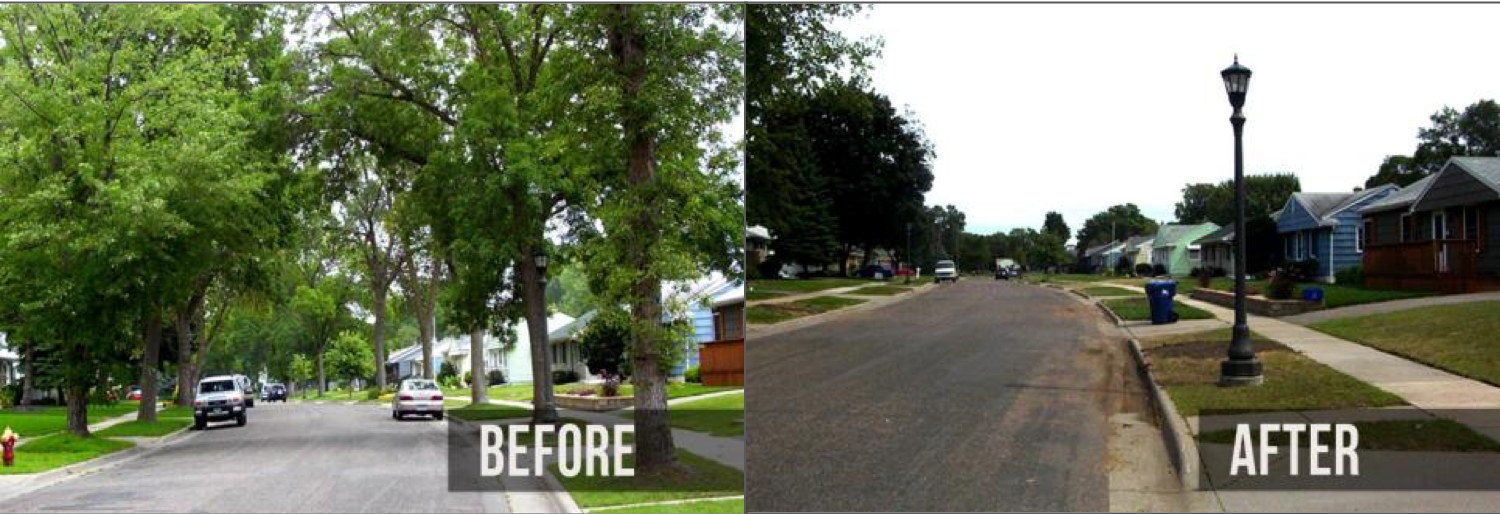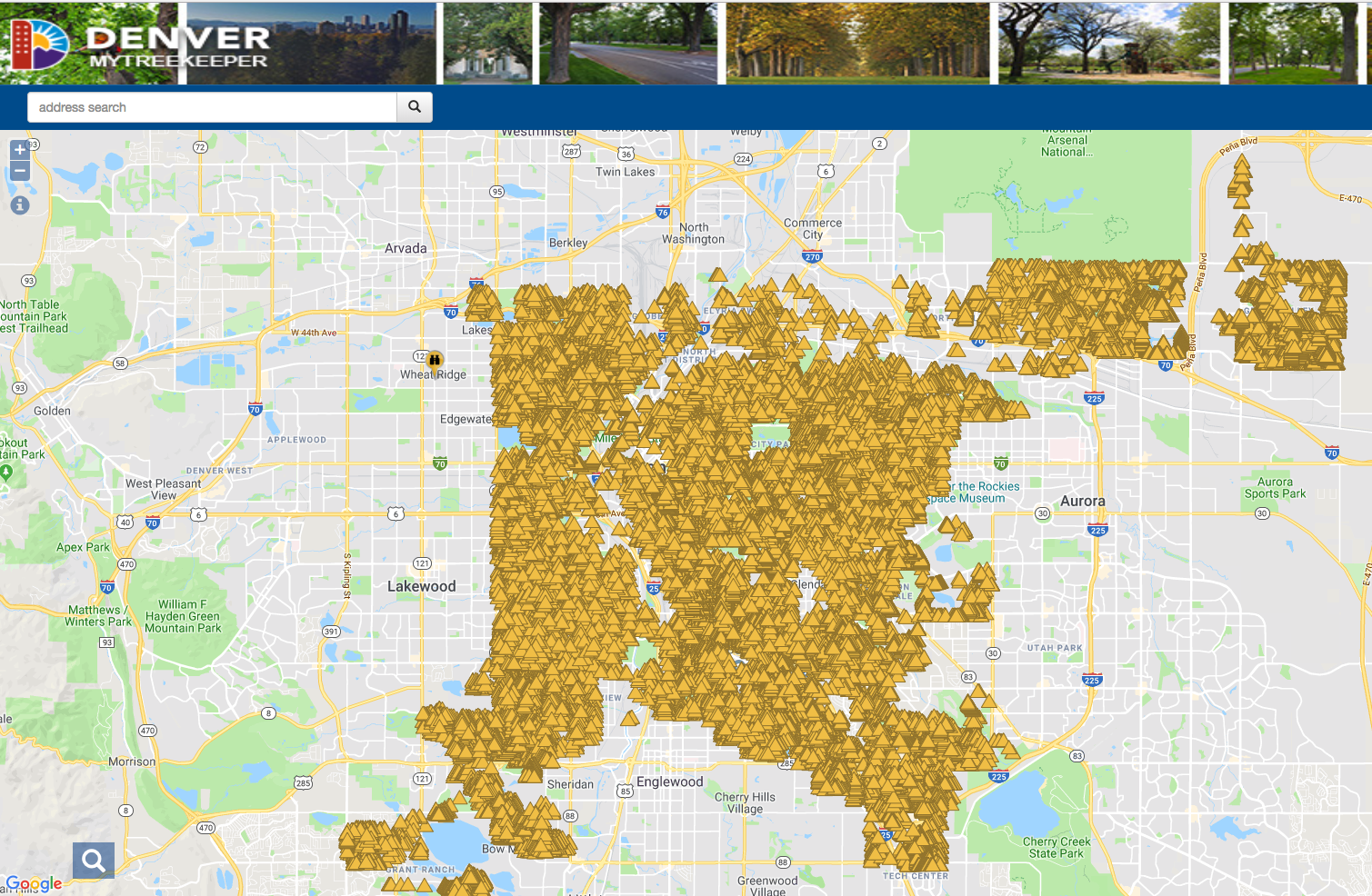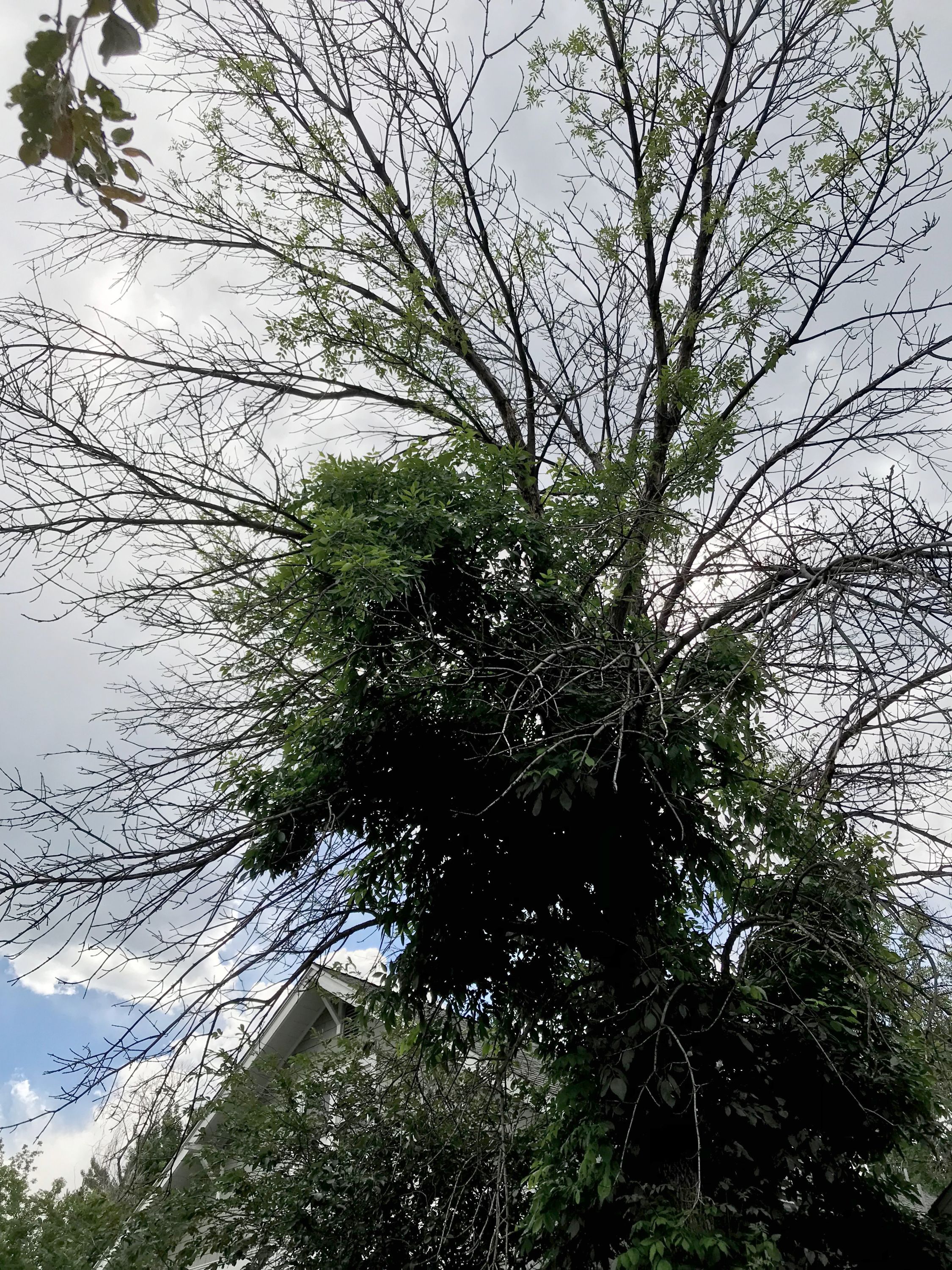Preparing for the Invasion: Emerald Ash Borer in Colorado

As part of its urban planning, the city of Denver recently asked residents what they wanted most in a revitalized downtown.
Residents had options to choose from, things like more bathrooms, increased security, better wifi.
They chose trees.
“The number one answer was trees,” said Denver City Forester Rob Davis. “Denver is an outdoor place, and the residents here love their trees.”
It’s a shame so many of them are about to die.
Blame the Emerald Ash Borer
Denver, and other Colorado Front Range communities like Boulder and Fort Collins, are under threat from the emerald ash borer, an invasive insect that has already chewed a path of destruction across the Midwest. Native to Asia and first detected in the United States outside Detroit in 2002, the insect has killed hundreds of millions of ash trees in an ever-widening circle radiating from that first introduction.

The insects bore into and feed on ash, which are common street trees across the country because of their tall, dense canopies and hardiness. But they have no defense against the emerald ash borer. Where the borer is present, green ash species have a nearly 100 percent mortality rate if left untreated, white ash 90 percent and blue ash a 70 percent mortality rate.
In 2013, the borer was discovered in Boulder, its first confirmed sighting in the West. Boulder is 30 miles from Denver and the question isn’t if emerald ash borer will make its way to Denver, but when it will be discovered. It may be there already.
How the cities are dealing with that discovery and preparing for the arrival of the insect builds on the experiences of Midwestern cities and offers lessons for other communities facing similar invasive threats.
Lesson One: Start Early
Well before the emerald ash borer was an imminent threat to Colorado, foresters there took notice.
“Kathleen Alexander, the forester in Boulder, took ash off the city’s approved street tree list in 2004, I think, really soon after the discovery in Michigan,” said Colorado State University entomologist Whitney Cranshaw. “She’s a fantastic city forester and saw it coming.”
Denver foresters visited Chicago, Illinois and Milwaukee and Madison, Wisconsin to learn from those cities’ experiences.

“One thing every city said was not to wait,” Rob Davis said. “Come up with a plan and once you know what you want to do, launch the plan. Don’t wait for a confirmed discovery because with this insect, once you find it, it’s likely been established for four or five years.”
Denver started with an inventory, in 2013, looking at canopy coverage in the city and calculating the benefits the urban forest provides. Those include $122 million in annual benefits from increased property value and ecosystem services like cooling, storm water management and pollution filtering.

“We did a street-tree inventory where 10 staffers walked a total of 4,000 miles,” said Denver’s Urban Forestry Program Manager Sara Davis. “We collected 15 different data points on all right-of-way trees, and visually documented ash trees on 36,000 private parcels.”
Boulder also did an inventory and both communities had similar number: ash made up about 15% of the street and park trees – one in six – and provide about 33 percent of the canopy.
Lesson Two: Educate Everybody
It’s difficult to get people to pay attention to something before damage is apparent, but it’s important. One key element of Denver’s active program was educating the city’s leaders about the threat.
“We wanted to educate the city council that we have an urban forest and this is what it does,” Sara Davis explained.
A city budget analyst helped the forestry department quantify the benefits Denver’s trees provide, and those dollars and cents figures convinced the council, which gave the department an 85 percent funding increase in one year.
“The budget director understood the need to get in front of this,” Sara Davis said. “That was huge.”

One way Denver is spending that money is a broad campaign to educate city residents on the impending impact of the emerald ash borer. Called “Be a Smart Ash,” the campaign isn’t doom and gloom.
“We want people to be proactive,” Sara Davis said. “Be a Smart Ash focuses on getting people to know if they have an ash tree, then deciding if it’s important to them and planning what to do with a tree professional.”
Denver’s foresters also took their own advice about working with professionals. Instead of trying to develop the public education campaign in-house, they hired a creative marketing firm to put together the campaign. (Rob Davis really only regrets the superhero cartoon he voiced.)
Boulder County also ran a highly visible public education campaign, partially financed by a grant from the Western IPM Center.
Lesson Three: Mitigate in Advance

Normally, mitigation happens after the fact to restore environmental damage. The Front Range cities are mitigating in advance.
Small ash trees – those with trunks less than 12 inches in diameter – are coming down and being replaced with other species. So are damaged ash. The cities are treating ash trees they want to preserve with systemic insecticides, commonly injected into the trunk or applied as a soil drench to be taken up by the roots.
“The old idea was that to plant a tree, a tree had to die,” Rob Davis said. “But we want to plant not only where trees have died, but also where they were never planted to begin with. If a resident has room in the public right of way at their house and wants a tree, we’ll plant one.”
The idea is to get as many new trees growing as possible, as soon as possible, so that when the ash dieback does come, the city suffers less.
“We know other places had to deal with a really horrible situation, and are trying to find little bits and pieces to make it a less horrible situation here,” Rob Davis explained. “Emerald ash borer is going to kill a whole lot of trees in Denver no matter what we do. We know it is going to be bad, so how do we soften the blow?”
And while the cities are doing what they can to protect the trees on city property, homeowners have to absorb the cost of treating ash trees on private property. Many do, spending $400 or so per treatment (at $5 to $15 per trunk diameter inch), but others don’t.
Dead and dying ash are already easy to see in several Boulder neighborhoods.
Lesson Four: Practice IPM
There’s a reason emerald ash borer was found in Boulder before anywhere else in the West. Boulder looks.
“We’re the first to find a number of things,” Kathleen Alexander said. “And I think it’s because we have a good IPM program. We do a citywide sweep every summer so we can pick up on trends. We have a good monitoring program and we’re absolutely looking for a lot of these things.”

Trying to avoid pest problems – or at least limit them – is another IPM practice the cities are using by planting a variety of trees in place of ash, and intermixing them. Unfortunately, in the Front Range, the mix is limited.
“Denver has a harsh environment for urban trees,” Sara Davis explained. “We need the junkyard dogs of urban trees and there are only eight or nine varieties that do well here.”
Managing resistance and minimizing unintended damage are also IPM principles. While studies have found that treatment can be more economical than removal, treatment does have potential downsides.
“Emerald ash borer has caused by far the biggest increase in the use of pesticides in the urban landscape,” Cranshaw said. He also recalled how 20 years ago European elm scale was causing a similar widespread dieback in American elm trees.
“We found that imidacloprid worked well,” he said. “So every single American elm was treated every other year or so, and then six or eight years ago we had full blown resistance to the noenicitinoid insecticides like imidacloprid. And our Plan B is poor – going back to using organophosphates.”
Prevention is another IPM tactic, and the best option for stopping the borer’s spread. But preventing the insect from moving around in infected firewood is a challenge.
“We think it came to Boulder by car,” Alexander said. “The area where it was first found is near the University of Colorado campus and has a lot of rental housing, and CU Boulder is popular with students from the Midwest. If you drive around that area, you see a lot of Illinois, Indiana and Ohio license plates.”
Keeping it from spreading that way again is the state’s challenge. Boulder County is quarantined, so wood isn’t supposed to leave the county. And if it doesn’t, the borer could stop at the Front Range.
“In Ohio, there were no natural barriers stopping it from spreading across the whole state,” Cranshaw said. “Here we have mountains and huge treeless areas that the insect couldn’t cross on its own. There’s no way it gets to Pueblo, for instance, unless someone takes it.”